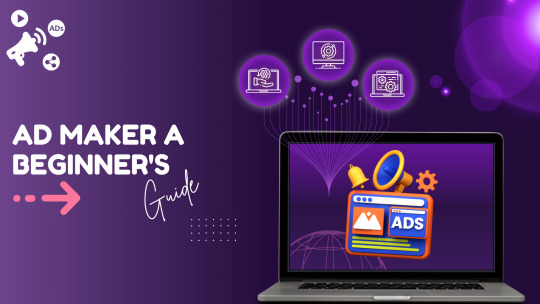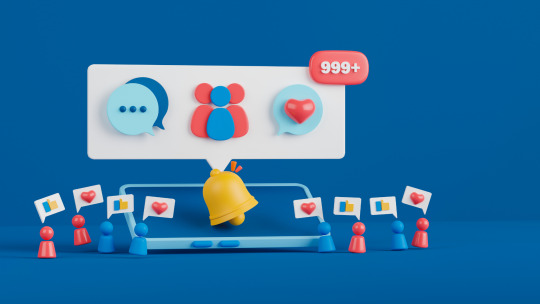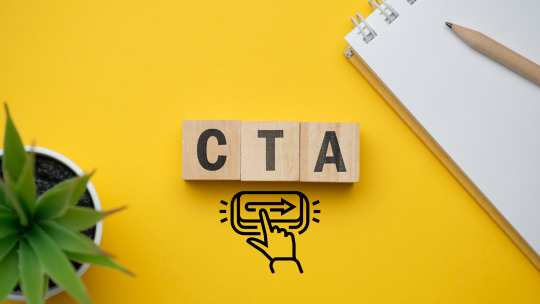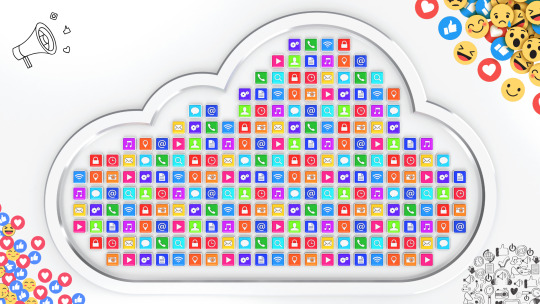Don't wanna be here? Send us removal request.
Text
Boosting Engagement With Content AI Generator

In today’s digital landscape, engagement is the key to success. Whether you’re a business, blogger, or content marketer, creating engaging content is essential to capturing audience attention, building trust, and driving conversions. However, producing high-quality, relevant, and engaging content consistently can be challenging. This is where artificial intelligence (AI) steps in, revolutionizing the way content is created and optimized. By leveraging AI-driven tools, businesses and individuals can streamline their content strategies and boost engagement effortlessly.
The Role of AI in Content Creation
The rise of Content AI Generator tools has transformed the content creation process. These tools analyze vast amounts of data, understand audience preferences, and generate compelling material tailored to specific needs. Unlike traditional content creation methods, AI tools can produce high-quality content quickly, saving time and resources while ensuring maximum effectiveness.
One of the primary advantages of AI-driven content tools is their ability to generate topic ideas, suggest relevant keywords, and structure articles to enhance readability. This ensures that content is not only informative but also optimized for search engines. Additionally, AI helps personalize content by analyzing user behavior, making it more relevant and appealing to the target audience.
How AI Enhances Engagement
Engagement goes beyond simply attracting visitors—it involves keeping them interested, encouraging interaction, and fostering brand loyalty. AI-driven content solutions play a crucial role in achieving this by:
1. Personalization and Audience Insights

AI analyzes user behavior, browsing history, and preferences to tailor content to individual needs. By delivering personalized recommendations, AI enhances the user experience, making content more engaging and relevant.
2. Optimizing Readability and Structure
Well-structured content with clear headings, bullet points, and concise paragraphs is more likely to capture and retain attention. AI tools assess readability scores and provide recommendations to improve structure, ensuring content is easy to digest.
3. Improving Visual Appeal
Incorporating images, videos, infographics, and interactive elements significantly enhances engagement. AI tools suggest relevant media elements, ensuring content is visually appealing and aligns with audience preferences.
4. Generating Captivating Headlines
A compelling headline is essential for grabbing attention. AI-powered headline analyzers assess engagement potential and suggest improvements, increasing click-through rates and overall content effectiveness.
5. Enhancing SEO Without Overloading Keywords
SEO plays a vital role in content visibility. AI tools help optimize content without excessive keyword stuffing, ensuring a natural flow while maintaining search engine ranking. By analyzing trending topics and competitive keywords, AI ensures content remains relevant and competitive.
The Future of AI in Content Marketing

As AI technology continues to evolve, its impact on content marketing will only grow stronger. AI-driven tools will become even more sophisticated, offering deeper insights into audience behavior, automating content curation, and enabling real-time engagement strategies.
Marketers and businesses that embrace AI will gain a competitive edge, as AI-driven content solutions enhance productivity, improve user experience, and drive higher engagement rates. By utilizing these tools strategically, content creators can focus on storytelling and creativity while AI handles optimization and efficiency.
You can also watch: Meet AdsGPT’s Addie| Smarter Ad Copy Creation In Seconds
youtube
Conclusion
Engagement is the foundation of successful content marketing, and AI is reshaping how content is created, optimized, and delivered. By integrating AI-powered solutions, businesses and content creators can ensure their material is highly engaging, relevant, and tailored to their audience’s needs. With the ability to personalize content, optimize readability, and enhance visual appeal, Content AI Generator are revolutionizing the digital landscape. As AI technology continues to advance, those who leverage its capabilities effectively will thrive in the ever-evolving world of content marketing.
0 notes
Text

This Infographic will help you learn Benefits of Using Ad Generator AI.
0 notes
Text
The Future Of Marketing Ad Generator AI Revolution

The world of marketing is undergoing a transformation like never before. Traditional methods of advertising are being replaced by intelligent, automated solutions that leverage artificial intelligence (AI) to streamline and enhance the process. Businesses, both large and small, are looking for innovative ways to create engaging advertisements with minimal effort and maximum impact. This shift has led to the rise of ad generator ai, reshaping the way brands connect with their audience.
The Rise of AI in Marketing
AI has been a game-changer across industries, and marketing is no exception. Companies are increasingly adopting AI-powered tools to optimize their campaigns, analyze consumer behavior, and create high-quality content. These tools can generate compelling ad copies, design visuals, and even determine the best strategies for reaching target audiences. The ability to process vast amounts of data and derive meaningful insights makes AI an indispensable asset for modern marketers.
How AI is Reshaping Advertising
AI-driven advertising is not just about automation; it is about enhancing creativity and efficiency. Traditional ad creation often requires a team of designers, copywriters, and strategists working for hours to develop compelling campaigns. With AI, this process is significantly streamlined, reducing both time and costs.
One of the biggest advantages of AI in advertising is personalization. AI can analyze user data, including browsing history, purchasing behavior, and preferences, to create ads that resonate with specific audiences. This level of customization enhances engagement and boosts conversion rates, as consumers are more likely to respond to content that feels relevant to them.
Benefits of AI-Powered Ad Generation

1. Speed and Efficiency
AI-powered tools can generate multiple ad variations within seconds, eliminating the need for lengthy brainstorming sessions and revisions. Marketers can launch campaigns faster and respond to trends in real-time.
2. Cost-Effective Solutions
Traditional advertising methods often require significant financial investment. AI-powered solutions reduce costs by automating content creation, eliminating the need for large creative teams.
3. Data-Driven Insights
AI can analyze large volumes of data to understand consumer behavior better. This enables brands to create highly targeted ads, improving return on investment (ROI) and reducing wasted ad spend.
4. Scalability
With AI, businesses can scale their advertising efforts effortlessly. Whether launching a campaign for a local audience or expanding globally, AI tools adapt and optimize content for different markets.
The Role of Ad Generator AI in Marketing’s Future

As AI technology advances, ad generator AI tools are becoming increasingly sophisticated. These tools can craft high-quality, engaging advertisements that align with brand identity while requiring minimal human intervention. They are designed to generate creative and effective ad content based on input parameters, ensuring that brands maintain consistency and relevance in their messaging.
The future of AI in marketing looks promising, with continuous advancements in machine learning and natural language processing (NLP). As these technologies evolve, AI-generated ads will become even more refined, capable of mimicking human creativity while optimizing performance.
Challenges and Considerations
While AI-powered advertising offers numerous benefits, businesses must also consider potential challenges:
1. Maintaining Authenticity
AI-generated content must still align with a brand’s unique voice and values. Over-reliance on automation without human oversight can lead to generic messaging that lacks emotional connection.
2. Privacy Concerns
With AI leveraging consumer data for personalized advertising, brands must ensure they comply with data protection regulations to maintain trust and transparency.
3. Balancing AI and Human Creativity
AI should be seen as a complement to human creativity, not a replacement. Marketers must find the right balance between automation and human input to ensure their campaigns remain innovative and compelling.
You can also watch: Meet AdsGPT’s Addie| Smarter Ad Copy Creation In Seconds
youtube
Conclusion
The integration of AI in advertising is revolutionizing the marketing landscape. Businesses that embrace AI-powered tools, such as ad generator ai, can stay ahead of the competition by creating high-quality, data-driven campaigns with ease. While challenges remain, the future of AI in marketing holds immense potential for brands seeking to enhance efficiency, personalization, and scalability in their advertising efforts.
As technology continues to evolve, the synergy between AI and human creativity will define the future of marketing, shaping a world where intelligent automation meets innovative storytelling.
0 notes
Text
Revolutionize Your Marketing Strategy With Content Generator AI

In today's fast-paced digital world, staying ahead in marketing requires both creativity and efficiency. Businesses that succeed often rely on technology to optimize their strategies and deliver results faster. One such technological advancement that has taken the marketing landscape by storm is artificial intelligence (AI). Among the many applications of AI, tools designed to assist with content creation are proving to be game-changers for businesses of all sizes. Let\u2019s explore how these tools can transform your marketing efforts and help you achieve unparalleled success.
The Evolving Role of AI in Marketing
Marketing has always been about reaching the right audience with the right message at the right time. However, with the rise of digital platforms, achieving this goal has become more complex. Enter AI, a powerful ally capable of analyzing vast amounts of data, identifying patterns, and providing actionable insights. From predicting customer behavior to personalizing content, AI simplifies tasks that would otherwise require extensive manual effort.
One of the most impactful areas where AI is making waves is content creation. Gone are the days when marketers had to spend hours brainstorming ideas, drafting copy, and revising content. With tools like Content Generator AI, this process is now faster, smarter, and more efficient.
Benefits of AI-Powered Content Creation

1. Time Efficiency
Traditional content creation can be time-consuming, especially for small teams with limited resources. AI tools streamline the process by generating high-quality drafts in minutes. This allows marketers to focus on refining strategies rather than getting bogged down by operational tasks.
2. Cost Savings
Hiring a team of writers, editors, and designers can be expensive. By leveraging AI, businesses can reduce costs significantly without compromising on quality. These tools are capable of producing content for blogs, social media, email campaigns, and more, all at a fraction of the cost.
3. Consistency in Tone and Quality
Maintaining a consistent brand voice across multiple platforms is crucial for building trust and recognition. AI tools ensure that your content aligns with your brand guidelines, delivering a unified message to your audience.
4. Data-Driven Insights
AI doesn\u2019t just create content; it also analyzes its performance. By examining metrics such as engagement rates and click-through rates, AI tools provide valuable insights into what resonates with your audience, helping you refine your approach over time.
How to Effectively Use AI for Your Marketing Strategy

To maximize the benefits of AI-powered content creation, it\u2019s essential to integrate these tools strategically into your marketing plan. Here are some tips to get started:
1. Define Your Objectives
Before using any AI tool, clearly outline your goals. Are you looking to boost engagement, drive traffic, or increase conversions? Having a clear objective will guide the tool\u2019s output to align with your desired outcomes.
2. Choose the Right Tool
Not all AI tools are created equal. Research and select a platform that aligns with your specific needs. Whether you need assistance with generating ideas, creating copy, or optimizing SEO, there\u2019s a tool for every purpose.
3. Customize the Output
While AI tools are incredibly advanced, they\u2019re not perfect. Review and edit the generated content to ensure it aligns with your brand\u2019s tone and values. Adding a human touch can make the content more relatable and engaging.
4. Monitor Performance
Consistently track the performance of your AI-generated content. Use analytics to measure its impact and identify areas for improvement. Over time, this will help you fine-tune your strategy and achieve better results.
The Future of Marketing With AI

As AI continues to evolve, its applications in marketing are expected to grow even further. From creating hyper-personalized campaigns to predicting future trends, the possibilities are endless. By embracing these tools now, businesses can stay ahead of the curve and maintain a competitive edge in their industries.
The key to success lies in understanding how to leverage AI effectively and integrating it seamlessly into your existing workflows. With the right approach, AI-powered tools can revolutionize your marketing strategy, enabling you to achieve more with less effort.
You can also watch: Meet AdsGPT’s Addie| Smarter Ad Copy Creation In Seconds
youtube
Conclusion
In conclusion, adopting AI-driven solutions is no longer a luxury but a necessity for businesses aiming to thrive in the digital age. By incorporating tools like a Content Generator AI, you can streamline your processes, improve efficiency, and deliver outstanding results. The future of marketing is here, and it\u2019s powered by artificial intelligence.
Are you ready to take your marketing to the next level? Start exploring the potential of AI today and watch your business soar to new heights.
0 notes
Text

This Infographic will help you to know Why is AI Copywriting Redefining the Writing Process?
0 notes
Text

This Infographic will help you to know Key Features of an AI Ads Generator: Your Secret Weapon for Targeted Advertising.
0 notes
Text
Elevate Your Brand With AI Ads Generator

In the dynamic world of digital marketing, staying ahead requires innovation and efficiency. As businesses strive to connect with their target audience, one tool has emerged as a game-changer: artificial intelligence. Specifically, leveraging advanced tools like an AI Ads Generator can revolutionize how brands approach advertising.
Understanding The Power Of Ai In Advertising
Artificial intelligence has transformed numerous industries, and advertising is no exception. It enables brands to create highly targeted campaigns by analyzing vast amounts of data and identifying patterns that humans might miss. With AI, you can optimize your advertising strategy by predicting customer behavior, personalizing content, and allocating budgets more effectively.
One of the most significant advantages of AI in advertising is its ability to save time. Traditionally, crafting an ad campaign required hours of brainstorming, writing, and testing. However, AI streamlines this process by generating high-quality ad copy, visuals, and targeting parameters in minutes. This efficiency empowers businesses to focus on broader strategies rather than getting bogged down in operational details.
Key Benefits Of Using An Ai-Powered Ads Generator

Precision Targeting: AI tools can analyze customer data to identify specific audience segments. By understanding user preferences, habits, and behaviors, brands can tailor their messages to resonate deeply with their audience.
Cost Efficiency: Advertising can be expensive, especially when campaigns miss the mark. An AI Ads Generator helps minimize wasted ad spend by optimizing campaigns in real-time, ensuring your budget is utilized effectively.
Enhanced Creativity: Contrary to the belief that AI stifles creativity, it can actually enhance it. By providing innovative suggestions and insights, AI allows marketers to think outside the box and create ads that stand out.
Data-Driven Insights: AI continuously learns from campaign performance, offering actionable insights. These insights help refine future campaigns, ensuring continuous improvement and better results over time.
Speed and Scalability: Whether you're a small business or a large enterprise, AI enables you to scale your advertising efforts quickly. You can launch multiple campaigns simultaneously without compromising on quality.
Real-World Applications
Imagine you're launching a new product and need a compelling ad campaign. An AI Ads Generator can analyze your product details, target audience, and market trends to create persuasive ad copy and visuals. It can even suggest the best platforms to run your ads, ensuring maximum reach and engagement.
For instance, a fashion retailer could use AI to highlight different products for various audience segments. Younger audiences might see ads featuring trendy streetwear, while professionals might be shown business attire. This level of personalization significantly enhances the customer experience and increases the likelihood of conversions.
Future Of Ai In Advertising

As technology continues to evolve, the role of AI in advertising will only grow. From voice-activated ads to interactive campaigns powered by augmented reality, the possibilities are endless. By adopting AI-driven tools now, businesses can position themselves at the forefront of this exciting transformation.
Tips For Getting Started
Define Your Goals: Clearly outline what you want to achieve with your ad campaigns. Whether it's brand awareness, lead generation, or sales, having a clear objective helps AI tools deliver better results.
Choose the Right Tool: Not all AI-powered tools are created equal. Research and select a generator that aligns with your business needs and offers features like audience segmentation, ad testing, and performance analytics.
Provide Quality Data: The effectiveness of AI depends on the quality of the data it receives. Ensure you feed the tool accurate and relevant information about your audience and business.
Monitor and Optimize: While AI can automate many aspects of advertising, human oversight is still crucial. Regularly monitor campaign performance and make adjustments as needed.
Embrace Experimentation: Don’t be afraid to test different approaches. AI thrives on data, and experimenting with various strategies provides valuable insights for improvement.
You can also watch: Meet AdsGPT’s Addie| Smarter Ad Copy Creation In Seconds
youtube
Conclusion
In conclusion, an AI Ads Generator offers an unparalleled opportunity to elevate your brand. By combining efficiency, precision, and creativity, it empowers businesses to connect with their audience like never before. The future of advertising is here—and it's powered by artificial intelligence.
0 notes
Text
Unleashing The Potential Of Ai Generated Content

In today’s digital era, content creation has become a cornerstone of marketing, education, and entertainment. Traditional methods often require substantial time, effort, and resources. Enter AI generated content, a revolutionary tool that is reshaping the way we produce and consume information. From automating mundane tasks to enabling creative innovation, AI-driven solutions are unlocking unparalleled possibilities in the content space.
What Is Ai Generated Content?
AI generated content refers to written, visual, or audio materials created using artificial intelligence technologies. Leveraging machine learning algorithms, natural language processing, and data analysis, these tools can craft everything from blog posts to social media captions, videos, and even music. ai generated content doesn’t just automate; it enhances the quality and relevance of content by analyzing audience preferences, trends, and historical data.
The Benefits Of Ai Generated Content
Businesses and individuals are increasingly adopting AI-generated content for various reasons. Here are some key advantages:
#1 Time Efficiency
Creating high-quality content manually can be time-consuming. AI tools streamline this process, producing drafts or even polished content in minutes. This allows creators to focus on strategy and creativity.
#2 Cost-Effectiveness
Hiring writers, designers, and other content creators can strain budgets. AI tools often provide affordable alternatives, delivering consistent results without compromising quality.
#3 Personalization
AI can analyze user data to craft personalized messages, increasing engagement. Whether it’s tailoring product recommendations or sending targeted emails, AI-generated content ensures relevance and resonance.
#4 Scalability
With AI, scaling content production becomes a seamless task. Businesses can generate large volumes of diverse content to cater to different platforms, audiences, and campaigns.
Applications Of Ai Generated Content

The potential uses for AI-generated content span various industries and contexts. Some of the most impactful applications include:
#1 Marketing and Advertising
Crafting engaging ad copies and product descriptions.
Generating social media posts tailored to specific audience segments.
Producing dynamic visuals or videos for campaigns.
#2 E-Commerce
Automating product descriptions for vast catalogs.
Creating personalized shopping experiences through tailored content.
#3 Journalism and Publishing
Generating quick news summaries or reports.
Assisting journalists with research and initial drafts.
#4 Education
Producing study materials, quizzes, and e-learning modules.
Summarizing complex topics for easier understanding.
Challenges And Ethical Considerations

While AI-generated content offers numerous benefits, it also presents challenges that need addressing:
#1 Quality Control
AI-generated content may lack the nuance or creativity of human work. Continuous oversight is essential to maintain quality.
#2 Plagiarism Concerns
Ensuring originality is crucial to avoid copyright issues. AI tools must be paired with robust plagiarism detection systems.
#3 Ethical Implications
The rise of AI-generated content raises questions about authenticity and transparency. Audiences value genuine human connections, and over-reliance on AI could impact trust.
#4 Bias in AI
AI systems learn from existing data, which may include biases. Developers and users must work together to minimize these biases and ensure fairness.
Best Practices For Leveraging Ai Generated Content

To maximize the potential of AI-generated content while mitigating challenges, consider these best practices:
#1 Use AI as a Complement
AI should support human creativity, not replace it. Use it to handle repetitive tasks, allowing your team to focus on strategy and innovation.
#2 Maintain Oversight
Always review AI-generated content for accuracy, tone, and relevance. Human input ensures quality and adherence to brand values.
#3 Prioritize Originality
Use tools that guarantee unique outputs and pair them with plagiarism checkers to uphold originality.
#4 Embrace Transparency
Be transparent about the use of AI in your content creation process. This fosters trust with your audience.
The Future Of Ai Generated Content
The landscape of AI-generated content is evolving rapidly. Advancements in machine learning and AI capabilities promise even greater sophistication in content creation. From real-time language translation to hyper-personalized narratives, the possibilities are boundless.
Moreover, as AI becomes more accessible, smaller businesses and individual creators will find themselves on a level playing field with larger enterprises. The democratization of content creation tools is poised to drive innovation across industries.
You can also watch: Meet AdsGPT’s Addie| Smarter Ad Copy Creation In Seconds
youtube
Conclusion
AI generated content is not just a trend; it’s a transformative force shaping the future of communication and creativity. By embracing this ai generated content technology responsibly, businesses and creators can unlock new levels of efficiency, engagement, and impact. Whether you’re a marketer, educator, or entrepreneur, now is the time to explore the boundless potential of AI in content creation.
1 note
·
View note
Text
Power of ad copywriting Strategies to Boost Conversions

This infographic will help you learn Power of ad copywriting Strategies to Boost Conversions.
0 notes
Text
5 Proven Strategies for Writing Engaging and Effective Blog Copy

This Infographic will help you To know 5 Proven Strategies for Writing Engaging and Effective Blog Copy.
0 notes
Text
Harnessing The Power Of Emotion With Advertisement Content Strategies

In today's competitive digital space, creating effective advertisement content is complex. With an overwhelming influx of ads across various platforms, making a difference requires more than just catchy slogans or flashy visuals. A lasting impact is made on consumers when there is emotional connection. Emotion-driven advertising taps into the psyche of the audience, fostering a much deeper sense of loyalty and engagement. By knowing how emotions affect the purchasing decision, brands can create more compelling campaigns that will appeal to their target market.
Understanding Emotional Advertising
The basis of emotional advertising is the concept that emotions drive consumer behavior. Whether it's joy, fear, nostalgia, or empathy, an emotional response has the power to influence how people perceive a brand or product. When creating advertisement content, tapping into these emotions can significantly impact consumer perceptions and decisions. Studies have consistently shown that emotionally engaged consumers are more likely to make purchasing decisions and even become brand advocates.
Since the human brain processes emotional content faster than rational content, ads that elicit an emotional response are more memorable. Emotional responses also improve recall; that is, when a consumer feels strongly about a brand or product, they are more likely to remember the ad and respond accordingly. This emotional connection creates a sense of urgency, driving consumers to take immediate action, whether it's clicking on a link, sharing content, or making a purchase.
Empathy & Storytelling In Ads

Storytelling is one of the most effective ways to leverage emotion in advertisement content. A well-crafted narrative will draw people in, making them feel personally connected to the characters and situations portrayed. Whether it's a heartwarming story about family, a journey of personal triumph, or
Brands such as Coca-Cola and Nike have learned to tell stories that connect to basic human emotions like happiness, determination, and unity. For instance, Coca-Cola's "Open Happiness" campaign was extremely simple yet powerful in using an image of people sharing moments together, thus making the brand synonymous with positive experiences.
The Power Of Visuals & Music
Visuals and music used in advertisements can also be amplified for emotional responses. Music is a strong trigger that sets the tone for an advertisement very fast. For example, if there is upbeat music, one may get excited. Melodic, slow tunes can be related to sadness or nostalgia. Facial expressions and body language of individuals on screen can also tell more than words can say.
For instance, a commercial that depicts a family enjoying a holiday with soft lighting and warm tones can bring out feelings of comfort and happiness. In the same way, an advertisement featuring a hero overcoming adversity with a triumphant soundtrack can evoke motivation and empowerment.
Emotional Triggers Within Advertisement Content

Different emotions serve different purposes in advertising. The best emotional trigger for a campaign will help the ad reach a more enhanced effectiveness. Here are some of the most common emotional triggers and how they are used in advertising:
#1 Fear: Often used in public service announcements, safety campaigns, or insurance ads, fear-based content urges consumers to take action to avoid negative consequences. For example, anti-smoking ads may show the health risks of smoking, prompting individuals to quit.
#2 Happiness: Ads that make the audience laugh or smile leave an indelible mark on viewers. Companies selling leisure-related, entertainment-related, or social gathering-related products use happiness to emphasize the joy brought about by their products.
#3 Nostalgia: Many brands are using nostalgia as a means to reconnect with their customers. Longing for the past can be quite an emotional bond, especially among older audiences who remind them of simpler times. Any advertisement that contains retro elements or brings back a moment of yesteryear pop culture always creates nostalgia.
#4 Empathy: Empathetic advertising resonates with people at a personal level and has an empathetic attitude and compassion. Charitable causes or causes to create awareness on social issues often make use of empathy for taking action either in terms of donation or support.
Long-Term Emotional Connections

While this creates short-term sales, the actual aim is to establish an emotional relationship with consumers that will last longer. Brand consistency comes in at this point. It means that a brand consistently inspires emotions in a positive manner such as humor, empathy, or trustworthiness that helps create great brand loyalty.
Consumers who have an emotional connection with a brand are likely to return, recommend the product to others, and stay loyal over time. A strong emotional connection transcends rational decision-making, making it harder for competitors to steal market share.
You can also watch: Effortless & Smart Ad Creation Made Simple with AdsGPT!
youtube
Conclusion
Advertisement content is no longer a luxury but a necessity where harnessing the power of emotion. Emotionally centered advertisements can form a more significant connection, help consumers build a loyalty relationship with a brand, and contribute to the generation of sales. Using story, determining the emotional hooks, and creating consistency across the brand, businesses can ensure that advertisement content is not only product sales-oriented but also meaningful and impactful to their target audience. In a world drowning in advertising, it will be those brands that create emotions in people, rather than mere thoughts.
0 notes
Text
Ad Maker A Beginner's Guide To Creating Effective Ads

In today’s fast-paced digital world, the ability to create eye-catching and effective ads is a valuable skill for businesses, entrepreneurs, and marketers. Whether you're promoting a product, service, or brand, a well-crafted advertisement can make all the difference in attracting attention and driving conversions. If you're new to the world of advertising, you might feel overwhelmed by the number of tools and strategies available. That’s where an ad maker comes in. This tool allows you to design ads that not only look professional but also engage your target audience. In this guide, we’ll walk you through the essential steps of creating impactful ads, from understanding your audience to optimizing your designs. By the end of this guide, you'll have the knowledge and tools to start crafting ads that stand out and deliver results.
#1 Knowing Your Target Audience
The very base of any successful advertisement is knowing who your target audience is. Before you even start making the ad, ask yourself: Who am I trying to reach? What are their pain points? What motivates them to take action? Your ads should be tailored to resonate with the specific needs and desires of your audience. This could be through language, imagery, or the benefits your product or service offers.
For example, an ad for a fitness product might focus on health-conscious individuals looking to improve their lifestyle. The language might emphasize energy, vitality, and results, appealing to the motivations of those looking to make a change in their life. Similarly, if you're marketing a luxury item, your ad would need to reflect exclusivity and prestige, speaking to the desires of affluent customers.
#2 Crafting A Compelling Message

Once you understand your audience, the next step is to develop a clear, compelling message. Your ad should communicate the value of your product or service in a way that's concise, engaging, and relevant to the audience. Focus on the benefits, not just the features. Benefits answer the question "What's in it for me?" and they create a sense of urgency or desire.
For instance, rather than enumerating the features of a new smartphone, tell them how the phone makes their life easier, faster, or more enjoyable. Explain how this solves a problem or augments your daily life, and a great clear message grabs the attention of a customer's eye, leading him further to take a purchase decision, or learn more about it.
#3 Attention-Grabbing Design
In advertising, first impressions are everything. The design of your ad will play a big role in how well it grabs attention and gets your message across. The visual aspects of an ad should be attractive, easy to understand, and consistent with the brand as a whole.
First of all, use bold, clear headlines that are readable at arm's length. Use strong colors, fonts, and high-quality images or graphics to make your ad stand out. Simple and clear is key; don't overload your design with too much text or too many elements. Instead, focus on one very strong visual element that underpins the message. Remember, the information should be communicated quickly and effectively in a crowded space.
#4 Call To Action (CTA)

There should be a call to action in an effective ad. A call to action is a directive that tells your audience what you want them to do next. Whether you want them to "Buy Now," "Learn More," "Sign Up," or "Get Started," your call to action has to be easy to find and simple to follow. Your call to action should be direct and persuasive and should urge the viewer to take the action right away.
Be specific in your CTA. For example, instead of just saying "Shop Now," you could say "Shop Now for 20% Off Your First Order." That not only tells the viewer what to do but also gives them an incentive to act.
#5 Testing And Optimization
One of the most crucial steps in creating effective ads is testing and optimization. Even the best ad campaigns need fine-tuning to maximize their performance. Run A/B tests by creating different versions of your ad and comparing their results. Test different headlines, images, and CTAs to see which ones resonate most with your audience.
Monitor key performance indicators (KPIs) such as click-through rates, conversion rates, and engagement metrics. Use this data to refine your ad designs, messaging, and targeting. Over time, you'll become better at understanding what works and how to make adjustments to improve results.
#6 Understanding Ad Platforms

Currently, there are many platforms available that one can use to create and run their ads, such as social media, search engines, and websites. Each of these platforms will have its own best practices as well as audience characteristics. For example, Facebook ads tend to do great for visual products, but Google Ads may be much more effective for search-driven queries.
Familiarize yourself with the platforms you are advertising on as they all have their own sets of creative guidelines and technical specifications. For example, some platforms might require specific size and formats for images, videos, or copy. This knowledge will help you to ensure that your ads look at their best and are well-optimized for performance.
#7 Budgeting For Ads
Finally, your advertising budget is essential to a successful campaign. Determine how much you're willing to spend and allocate your budget accordingly across different ad platforms. Be mindful of your spending and monitor the performance of your ads to ensure you're getting the best return on investment (ROI). Start small and scale up as you see positive results.
You can also watch: Meet AdsGPT’s Addie| Smarter Ad Copy Creation In Seconds
youtube
Conclusion
Creating effective ads with an ad maker will be creative, strategic, and rooted in understanding your audience's needs. By emphasizing a message, an attractive design, a proper call to action, and then testing and optimization, it is possible to come up with ads that resonate with the viewer while driving tangible results. So, take these principles and get cracking as you begin exploring the wide world of advertising. With practice and persistence, using an Ad Maker, you will be able to hone your craft and create ads that really drive home the message.
1 note
·
View note